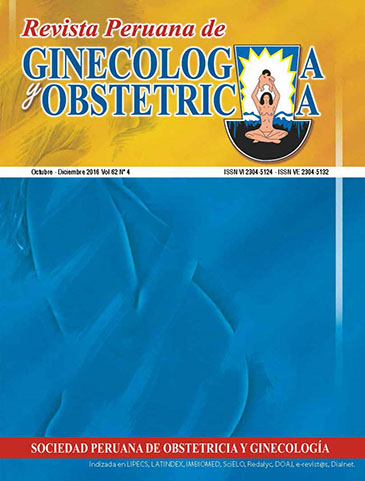Giant plancental chorioangioma, case report
DOI:
https://doi.org/10.31403/rpgo.v62i1950Abstract
Placental chorioangiomas are benign vascular tumors and are the most common placental tumors, with a prevalence of 1%. It rarely surpasses 4 - 5 centimeters in length and, when it happens, is referred to as giant chorioangioma. Pregnancies with giant chorioangiomas are associated with maternal and fetal complications, such as severe microangiopathic haemolytic anemia, preterm labor, polyhidramnios, intrauterine growth restriction, thrombocytopenia and hydrops. A case of giant chorioangioma diagnosed at 22 weeks is presented. Despite close follow-up, delivery occurred at 30 weeks of pregnancy due to polyhidramnios and premature rupture of membranes. Both mother and newborn recovered without complications.Downloads
Download data is not yet available.
Downloads
Published
2017-01-09
How to Cite
Rondón Tapia, M., Reyna Villasmil, E., & Torres Cepeda, D. (2017). Giant plancental chorioangioma, case report. The Peruvian Journal of Gynecology and Obstetrics, 62(4), 455–458. https://doi.org/10.31403/rpgo.v62i1950
Issue
Section
Casos Clínicos
















